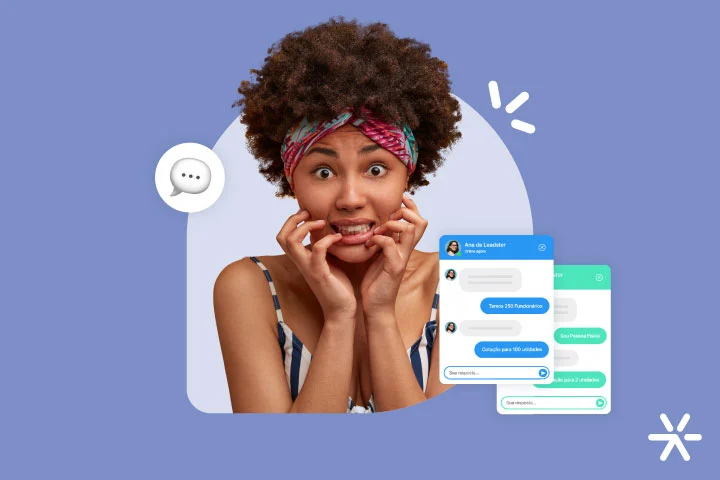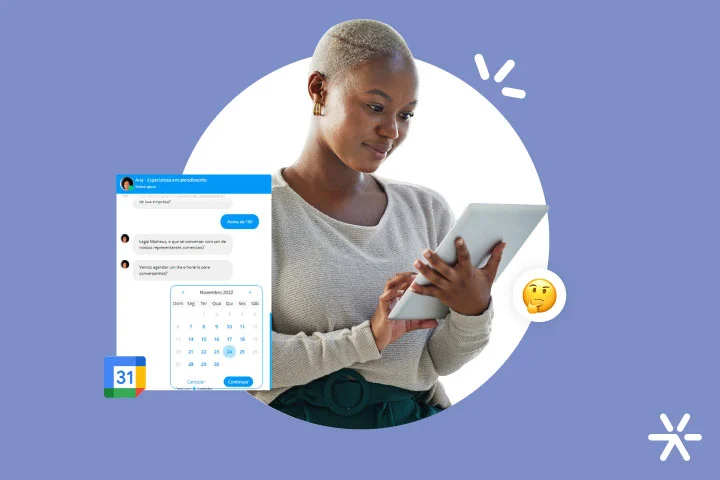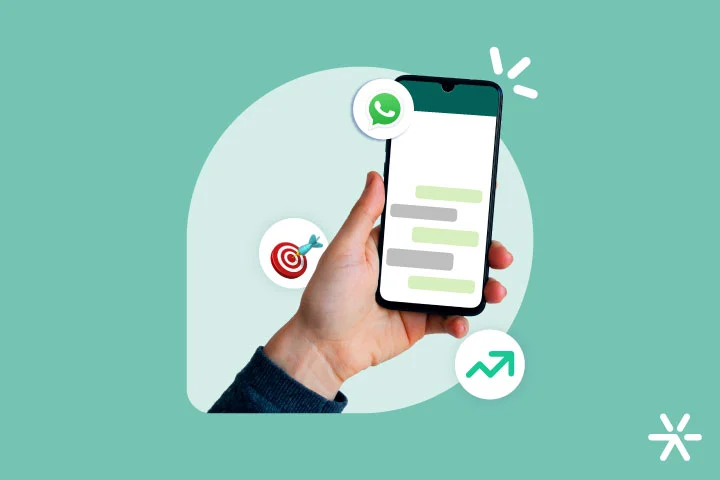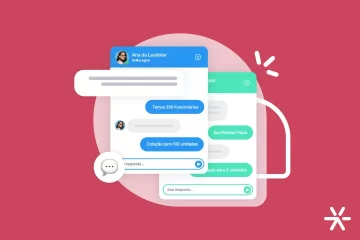How to Transition from Chatbot Support to Human Support – and vice versa
Chatbot support greatly facilitates the customer service routine in any company. However, it by no means replaces human support.
And it’s not even worth trying. When it comes to customer service, it’s always better to start with a chatbot support and, if necessary, proactively offer human support.
This is because the chatbot support organizes the queue of requests while, if possible, resolving user inquiries.
Today’s article addresses this topic: to what extent should chatbot support be used? And how can the transition to human support be made in the best possible way?
Let’s dive deeper into this subject. We’ll also explore the other main type of chatbot available on the market: the one designed to generate leads.
Let’s begin:
Understanding the Two Main Types of Chatbots Available Today

Chatbots are highly versatile tools and can be used for various purposes.
Today, the two main purposes for chatbots in the market are support and lead generation.
Support is usually provided through specific platforms that offer direct assistance on websites, via SMS, WhatsApp, and Telegram.
Meanwhile, the focus of lead generation chatbots is slightly broader: they work directly on your website to automatically qualify leads.
It’s important to understand the functioning of these two types of chatbots to have a clear idea of what to expect from them—how far they go and what they typically offer.
Let’s explore this further!
Support Chatbots
Support chatbots operate in a straightforward manner.
They can be configured in various ways and have different levels of functionality depending on the platform chosen.
Don’t worry, as we’ll discuss chatbot support and the differences between platforms throughout this article.
But in summary, chatbot support aims to provide simple options for resolving basic issues for the user.
And it goes a bit further as well: it seeks to offer a conversational approach from the first interaction, even if the issue isn’t resolved and a human interaction is required.
Many requests are simple to resolve and can be handled directly by the chatbot. Banks, for example, offer most of their services through chatbot support.
These services include problem-solving and requests that you used to handle in person or by talking to your bank manager.
This is the primary role of chatbot support. But what about its counterpart? How does a lead generation chatbot work?
Let’s discuss this in more detail in the following section. Join me:
Lead Generation Chatbots
Lead generation chatbots work a bit differently. Their primary concern is converting website visitors into leads.
These chatbots are the natural evolution of forms on landing pages.
For these chatbots, human interaction isn’t necessary. In fact, there isn’t even support for human interaction.
All the work of a lead generation chatbot is automated, which is its main advantage over other types of chatbots.
Types of Support Chatbots
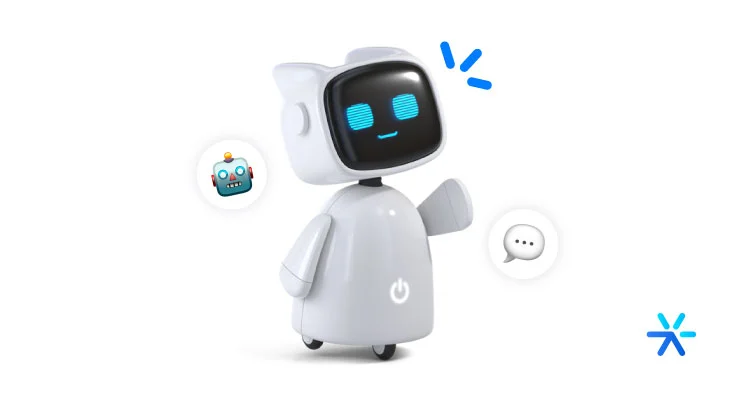
Support chatbots vary significantly, especially in the features they offer.
The overall design of these tools doesn’t change much. They all operate similarly in customer service.
But it’s their features, what’s under the hood, that makes all the difference.
This difference, by the way, impacts the tool’s selection process.
Let’s now explore the types of chatbots based on the resources they offer.
If you want to delve deeper into the topic, I suggest reading our more comprehensive article, which covers 10 types of chatbots in detail. Access it below:
➡️ 10 Types of Chatbot and How To Choose the Best
Now, let’s learn more about the types of support chatbots.
Rule-Based Chatbots
These are the simplest types of chatbots to configure.
They are chatbots that don’t independently converse with users. Their operation is based on pre-defined flows and rules.
This is the case with WhatsApp chatbots, for example.
Since these chatbots are simpler, the rule here is clear: chatbot support should go as far as the chatbot can handle.
There are inquiries that are too complex for this type of chatbot. Most of the time, it operates more simplistically, resolving basic requests with the help of company systems.
This applies to the bank chatbots we mentioned earlier. WhatsApp requests use this model to resolve practical issues, like generating a second invoice or increasing credit limits.
Typically, this chatbot operates in two distinct ways:
- Option selection: This is when the user only chooses responses within the predefined flow. Leadster’s chatbot works this way, for example. In our case, it works because there’s no need for extensive conversation with the chatbot, which operates as a CTA throughout the site;
- Keyword-based chatbot: Here, the user can have a limited conversation with the chatbot, which doesn’t fully understand it but can identify certain keywords and provide related options. You might say something like “I missed the payment date, need a second copy,” and the chatbot identifies the keyword “second copy” and responds accordingly.
Contextual Chatbots
These are more advanced chatbots that understand the context of the message and offer options based on the user’s request.
These are often considered true virtual assistants. The most advanced examples include Alexa, Siri, Cortana, etc.
Contextual chatbots also have varying levels of complexity. Some can naturally guide the conversation, while others only offer options based on what is being said.
This represents the future of chatbots: talking to them is like talking to a human.
However, there isn’t yet a contextual chatbot that can think and act like a human in customer service situations.
For this to happen, we need technology that can understand what the user is saying and provide correct responses based on the company’s database without losing compliance.
We are quite advanced in this first requirement, but we’re still developing tools for the second.
The closest we’ve come today are chatbots from Zendesk and Salesforce, which capture requester information, understand what they need, and offer resolution suggestions to the human attendant.

How Long Should Chatbot Support Last?

So far, we’ve talked about the types of chatbots and everything they can deliver within a support strategy.
Although there aren’t many support chatbots that do the entire job, in many cases, it’s unnecessary to involve human agents.
There are requests so simple that human support would actually hinder rather than help.
However, there are also situations where chatbot support needs to be as fast as possible and should be quickly transferred to human agents.
Let’s discuss those cases now. When is the ideal moment to pass the baton?
And right after, we’ll talk about the best ways to make this transfer.
Come with me:
Moments When the Chatbot Can Operate Alone
First, it’s worth discussing when the chatbot can operate on its own, and there’s no need to hand off support to a human just yet.
Usually, it’s important to keep the user’s expectations as the main focus. There are moments when human support does more harm than good.
I made a quick diagram to better understand when these moments are:
- Simple Requests: When it’s possible to resolve the request through the chatbot without involving a human, it’s better to do it that way. Avoid complicating what is simple. A second copy of an invoice, delivery updates, and package tracking—all of these can be resolved by the chatbot alone with integrations into your systems.
- Also Simple Information: Shipping cost calculations, product and service pricing, tracking the status of a request—these can also be handled by the chatbot.
- Proactive Messages: When your system goes down, or there are service instability issues, it’s important to use the chatbot to inform the user of the problem and the resolution right from the start.
- Direct System Interactions: When your customer needs to send documents, for example, which will be stored directly in the system. Or when they need these documents. The chatbot itself can deliver what is needed, depending on the technology. But it’s important to understand here that if the chatbot does not offer this kind of support, a human agent needs to be called in.
Moments When It’s Important for a Human to Provide Support
So, we understand that in some situations, it’s even better for support to be handled solely by the chatbot, right?
As we saw, most of these situations involve simple requests where human support would take longer than the chatbot’s resolution.
Think for a moment about the path your user needs to take to access the chatbot: they need to make contact, select their options, and then receive the chatbot’s response.
And in this process, the user decides if they need more requests resolved.
When you involve a human in the process, more steps emerge: the user needs to request to speak with a human agent, then wait for the agent, and only then does the support begin again.
And depending on your company’s chatbot system, you must consider that the chatbot may not have the option to save the requester’s information, requiring the agent to ask everything again.
But this is rare. The main point to consider is what is easier for the requester at the moment: talking to the chatbot or the human?
I’ve outlined some situations below where it’s important for support to be transferred:
When Asking Sensitive Questions
If you’re going to ask more in-depth questions about the requester, such as sensitive personal data, it’s better for the option to request a human agent to be available.
Or you could automatically transition, informing the user that it will happen.
Many people become wary when asked to provide very detailed personal documents or copies of those documents.
So, it’s better for the user to know that if needed, an agent can explain everything at any time.
When Dealing with Files
Chatbots may struggle when working with files that the user needs to send.
Copies of contracts, personal documents, etc. Even if the documents aren’t very sensitive, it’s better for their receipt and upload into the system to be handled by human agents to avoid errors.
In Negotiations
When negotiating debts or overdue payments, it’s also better for human support to handle it.
This is because you have a much better chance of resolving delinquency when the collection is done by a person rather than a bot.
Human agents can negotiate conditions beyond the rules set in the chatbot.
And these negotiations can be simple. For example: you’re dealing with a delinquent customer who has six overdue payments, something common in private schools.
During the resolution, the customer asks the school to generate an invoice due in 7 days.
The problem: the rule established in the chatbot only creates invoices due on the day of the request. If the support is only done by the bot, you could frustrate the delinquent customer and lose the negotiation.
A human agent can request authorization from the finance manager and issue the invoice as an exception.
For Complex Requests
This is the most common case in chatbot support: users leave the chatbot to handle the primary qualification of the customer’s request. What they need, their identification, etc.
Then, the chatbot presents the options to the user.
If the request is very complex, it’s important to guide the user to a human agent immediately.
The job becomes easier with chatbots that understand keywords. This way, the bot can determine if the request is simple or complicated before it starts and organize accordingly.
How to Transfer Support from a Chatbot to a Human Agent?
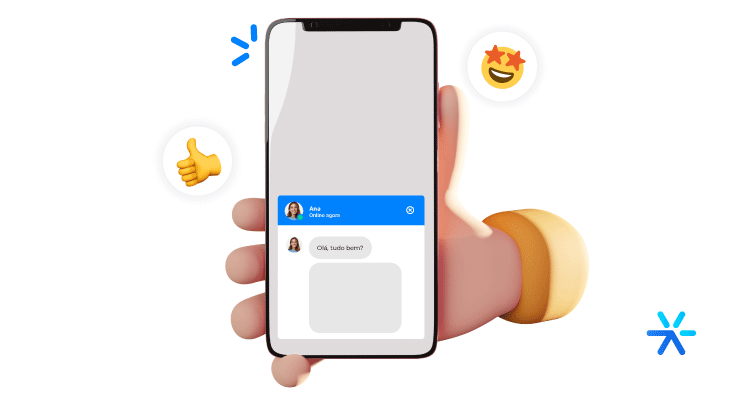
To wrap up the article, we need to understand one last point: how exactly does the transition from the chatbot to a human agent happen?
There are some tried and tested methods that we’ll discuss here in this topic.
The important thing is to understand something right out of the bat:
The chatbot user should have the freedom to speak with a human agent whenever they want.
But how do you offer the transition from digital to human support? Let’s look at some situations now, follow me:
At the Beginning of Chatbot Support
You can inform the chatbot user that human support can start at any time, depending on their request.
The message might say, for example: “Our support is automated, but you can request a human agent at any time by saying REQUEST AGENT.”
This way, you leave the responsibility to the users to choose the best moment to make this transition.
This is how most chatbot support happens today.
As an advantage, we can highlight the user’s autonomy, who decides for themselves which type of support is most appropriate for the situation.
And at the same time, there’s also the advantage of not overloading your support team, which waits for users’ requests.
Offered by Keyword
This case is common when you don’t have chatbot flows for every type of support request.
And also for cases where the request goes beyond the usual support situations in your company.
In these cases, as soon as an unidentified keyword is offered to the chatbot, it offers human support.
Something like, “I couldn’t understand your request, would you like to speak with a human agent?”
It’s important for the user, in these cases, to choose between making their request again or directly calling the human agent.
In Special Conditions
You can also determine situations where support must always be provided by human agents, completely eliminating chatbot support in these cases.
This happens in cases like the negotiation we mentioned earlier.
In this case, chatbot support ends when a specific keyword is detected.
For example: the user says, “I’d like to cancel my service.” The support chatbot recognizes the word “cancel” and immediately directs the support to a human.
So, everything understood 100%? I hope so!
If you have any questions, don’t hesitate to comment. We answer all your questions.
And if you want to learn more about the types of support chatbots, we have a very comprehensive list here on the blog that you can check out. Just click on the link below:
➡️ [TOP 20] The Best Chatbots in the Market in 2024
This is the list we update every year, talking a lot about chatbots and offering the best on the market separated by type. It’s well worth the read.
But if you’re still at the basics, in the banner below, we explain more about how chatbots work and what their main differences are.
We even talk a lot about which chatbots are best to choose according to your main needs.
To access, just click on the banner below. I’ll be waiting for you, okay?


